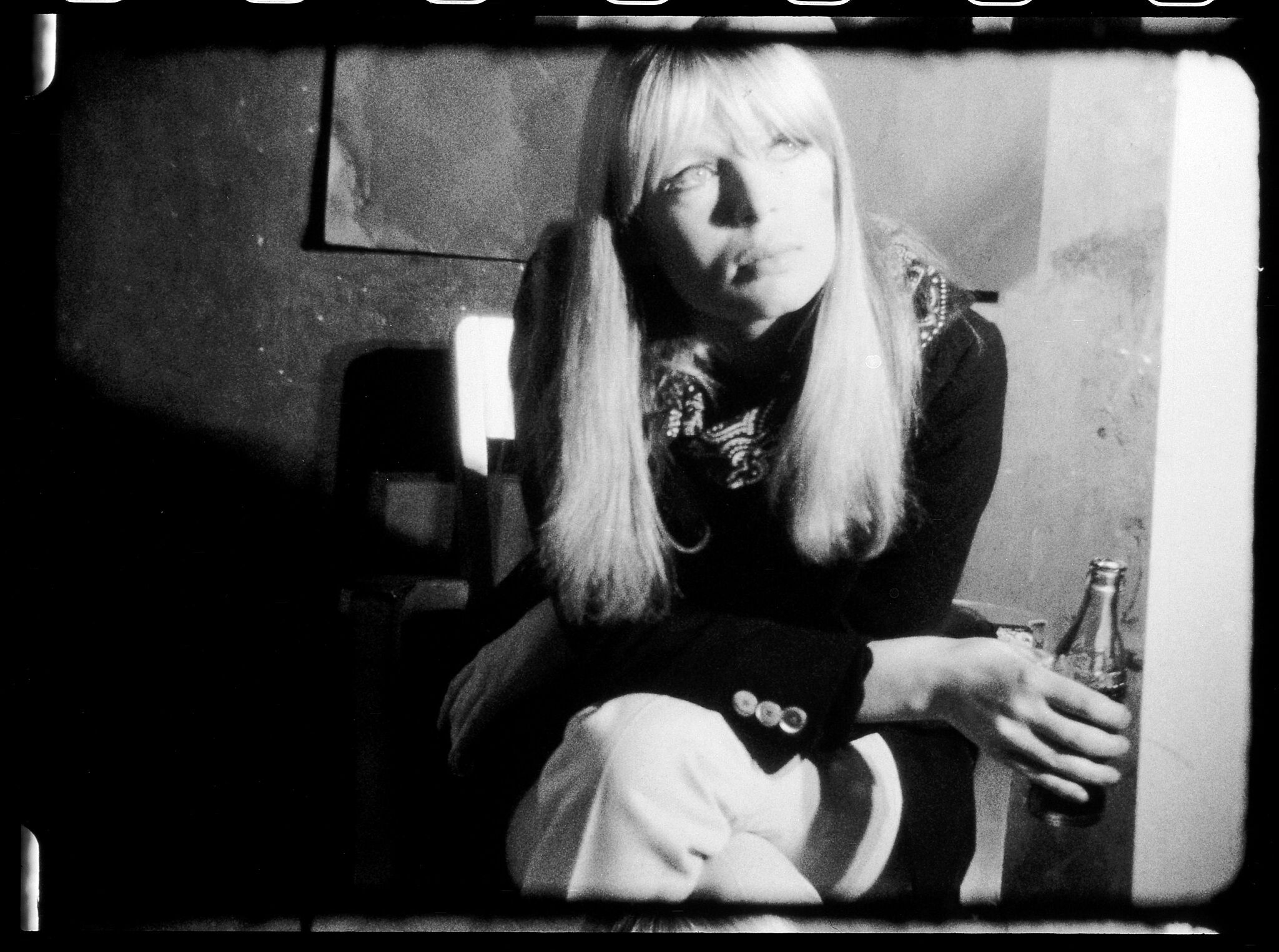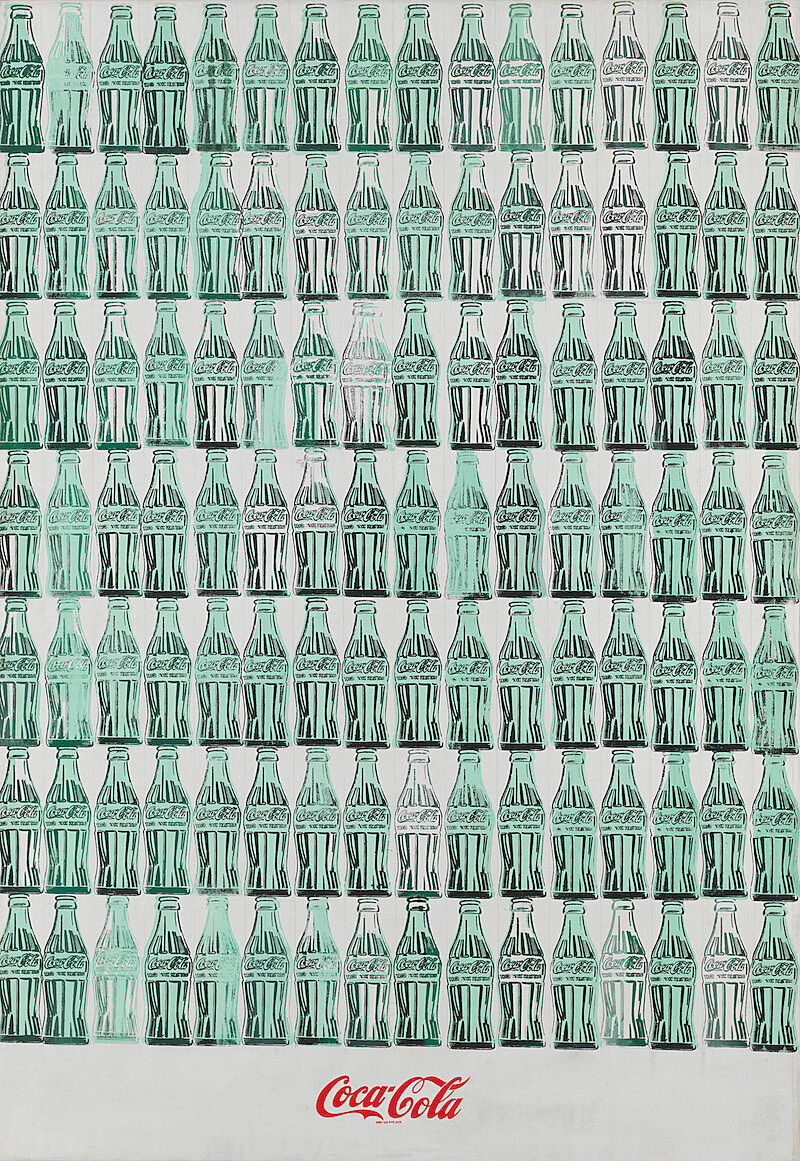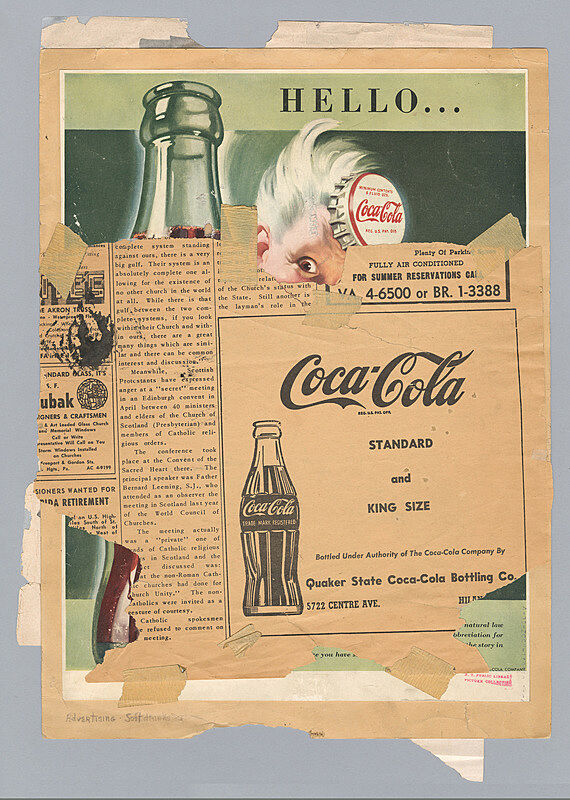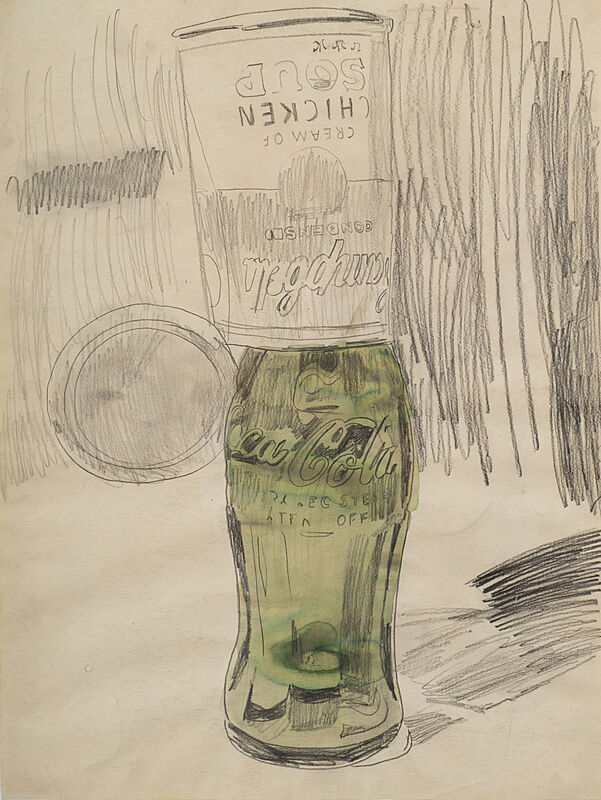Andy Warhol— From A to B and Back Again | Art & Artists
Nov 12, 2018–Mar 31, 2019
Andy Warhol— From A to B and Back Again | Art & Artists
Mechanical Reproduction
3
Warhol continued to use in his fine art some of the reproductive techniques and tools he had employed in his commercial work and painting of the 1950s: the blotted line, rubber stamps, and stencils, as well as an overhead projector and photostat machine. Using repetition, subtle surface variations, and different color combinations, he transformed quotidian subject matter such as dollar bills, self-improvement ads, instructional diagrams, soup cans, Coke bottles, and supermarket packaging into optically charged, painterly fields. Unlike in screenprinting's commercial application, in which the silkscreen creates exact duplicates, Warhol varied the pressure on the silkscreen while printing in order to produce a varied effect. As he reached beyond Abstract Expressionism’s quest to transcend ordinary life through the spiritual and mythic, Warhol found inspiration and even heroism in the everyday. He had an exceptional grasp of the parallels between contemporary painting and sculpture and the visual strategies of advertising, along with an intuitive understanding of what would read as serious art, even as he upended its hierarchies.
Green Coca-Cola Bottles, 1962
During his first decade in New York, as an illustrator drawing products for advertisements, Warhol’s success hinged on his ability to “sell the sizzle, not the steak.” Yet, in choosing to make the contours of the American Coca-Cola bottle the subject of a painting, he was celebrating both its iconic recognizability and its democratic appeal.
“A coke is a coke and no amount of money can get you a better coke.”
In embracing the image of the Coca-Cola bottle as fine art, Warhol opened up the possibility of linking the worlds of commercial and fine art.
-
-
-

Whitney Film Program: Commercial/Commodity
-
Hear how Warhol used commercial techniques in his art
0:00
Hear how Warhol used commercial techniques in his art
0:00
-
Related works 3
Related artworks
From the Collection



